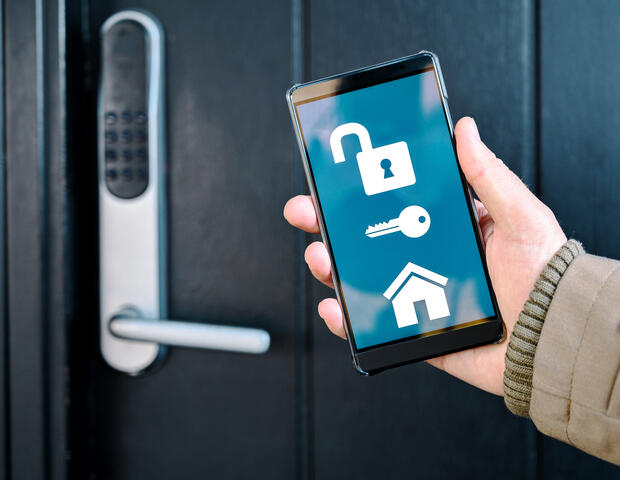Privacy Policy
Cookie Preferences
We use cookies and other tracking technologies to improve your browsing experience on our website, show you personalised content, and analyse our website traffic. Privacy Policy
We use cookies and other tracking technologies to improve your browsing experience on our website, show you personalised content, and analyse our website traffic. Privacy Policy



Locks have been around for thousands of years, but the digital revolution is driving significant transformations in this space. Connected locks, also known as smart locks or digital locks, are becoming increasingly commonplace, particularly with the advances in smart buildings and cities.
The first locks were invented approximately 4,000 years ago by the Egyptians and the Babylonians to safeguard their valuable belongings. Early locks were relatively simple devices, often made of wood or metal. Over time, locks have become more complex and sophisticated, incorporating new features such as multiple keys, tumblers, and wards.
The first mechanical card lock was invented in 1976 by Tor Sørnes, a Norwegian locksmith. Sørnes's lock used a keypad to enter a code, which was then verified electronically. Digital locks have become increasingly popular in recent years, due to their convenience, security, and flexibility.
Over the past few years, customers have been demanding so much more from security systems. In the world of locks, relying on a physical key is quickly becoming a thing of the past. Today, connected locks are more and more commonplace, particularly with the advances in smart buildings and cities.
IoT is also having a significant impact on the security industry. Connected locks are one of the most exciting and innovative applications of IoT in security. Connected locks offer a few advantages over traditional locks, including:
Convenience: Connected locks can be unlocked using various methods, such as smartphones, key fobs, and biometric scanners. This eliminates the need to carry physical keys.
Security: These smart locking systems can be programmed with complex access rules and permissions. This allows for more control over who has access to buildings and other secure areas.
Access control: Connected locks can be accessed remotely using a smartphone or other internet-connected device. This is useful for managing access to buildings and other secure areas when you are not there in person.

IoT locks can provide several security improvements over traditional locks. For example, IoT locks can be programmed to send alerts to your smartphone when someone attempts to unlock the system with an invalid code or credential. This can help you to detect and respond to security breaches more quickly.
Removing the need for a physical key or token to access a site makes perfect sense. The administrative work it causes can be significantly reduced by a smart system that allows access using passwords, permissions, access codes and more.
The ability to remotely access and manage connected locks is another key benefit. This is especially useful for businesses with multiple locations or for businesses that need to grant access to buildings and other secure areas to contractors or other visitors.
Any device or system connected to the internet (or mobile networks) poses a potential risk. When that device is protecting people and property, the importance is obvious. The digital revolution has tried to simplify these processes and ensure safeguarding at the same time.
There are several steps that can be taken to mitigate these risks, such as:
- Using a secure network connection.
- Using strong passwords and enabling multi-factor authentication (MFA).
- Keeping the firmware up to date.
- Choosing a lock from a reputable manufacturer.
- Password changes each month.
- User permission management.
It is super important to secure the network of your smart locks to mitigate the potential risks associated with using connected devices. As experts in critical connectivity, CSL plays a vital role, in ensuring organisations’ network remains connected and secure.
Neop is a leading European supplier of connected locks, and they needed to ensure that their solutions provided maximised access for users, without compromising on security. CSL's Gemini Platform helped Neop secure its systems and roam on any network for maximum uptime and reduced costs. Read more on the CSL’s partnership with Neop.
Connected locks offer several advantages over traditional locks, including convenience, security, and flexibility. While there are some potential risks associated with using connected locks, these risks can be eliminated by taking appropriate precautions.
If you are looking for help to secure the network of your connected or smart locks, CSL can provide you with the expertise and solutions you need. CSL's team of experienced connectivity experts can help you design and implement a secure network for your smart locks. Speak to one of CSL’s connectivity experts and discover how you can improve your security systems network.